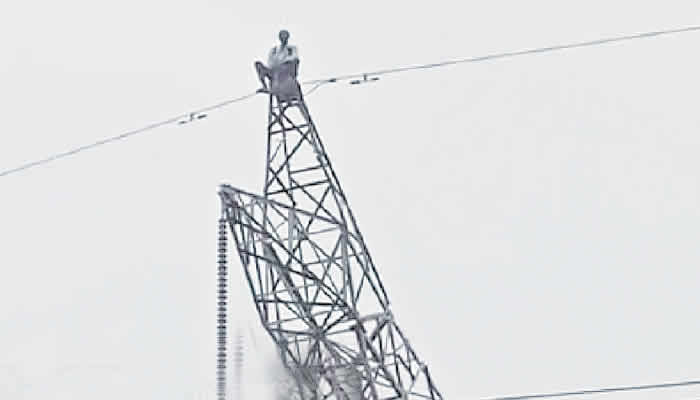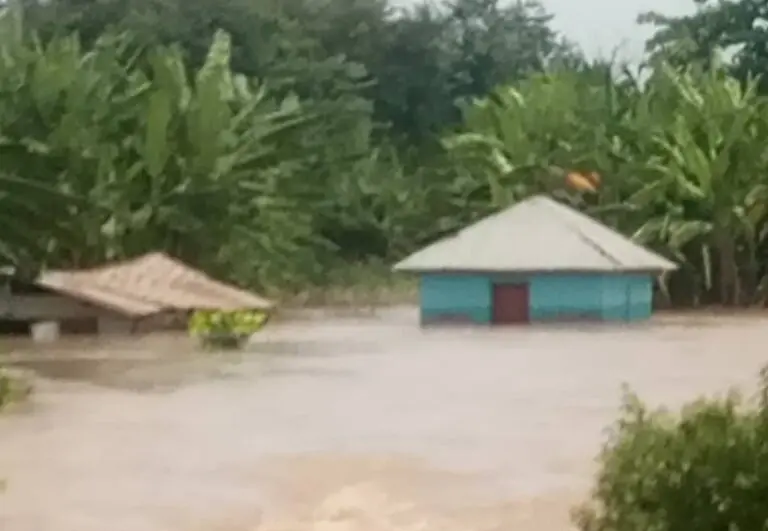…says no unusual increase in respiratory infections in Nigeria
…warns against overcrowded places, poor hand hygiene
The Nigeria Centre for Disease Control and Prevention (NCDC) has described as false, news making the rounds that the World Health Organisation (WHO) has declared the Human Metapneumovirus (HMPV) said to have originated from China, as a Public Health Emergency of International Concern (PHEIC).
NCDC in a public health advisory issued on Monday. noted that although they were reports of a significant rise in HMPV cases in China and increased respiratory infections linked to HMPV in other countries such as the United Kingdom (UK), France, and Germany, particularly during the winter season, no unusual increase in respiratory infections have been detected in Nigeria yet.
The Agency assured that it was fully committed to safeguarding the health of all Nigerians, adding that it was closely monitoring global developments on the HMPV in collaboration with the Federal Ministry of Health and Social Welfare to provide timely, accurate information and guidance to keep Nigerians informed and prepared.
The advisory partly reads: “It is important to note that the rumor circulating about the World Health Organization (WHO) declaring HMPV a Public Health Emergency of International Concern (PHEIC) is false and should be disregarded.
“The WHO has not made such a declaration. Recent reports indicate a significant rise in Human Metapneumovirus (HMPV) cases in China, as well as increased respiratory infections linked to HMPV in countries such as the United Kingdom (UK), France, and Germany, particularly during the winter season.
“The UK Health Security Agency (UKHSA) has highlighted a notable rise in hospital admissions due to HMPV-related complications, especially among children under five and older adults in care homes. This trend emphasizes the need for heightened preparedness and vigilance.”
The advisory added, “Nigeria operates a National Influenza Sentinel Surveillance (NISS) system, comprising sentinel sites distributed across the six geopolitical zones of the country. These sites, which include tertiary and secondary health facilities, monitor Influenza-like Illness (ILI) and Severe Acute Respiratory Infections (SARI).
“As of January 6, 2025, data from this surveillance system does not indicate any unusual increase in respiratory infections, including those caused by Human Metapneumovirus (HMPV).
“However, given the global trends in HMPV cases, the Nigeria Centre for Disease Control and Prevention (NCDC) is proactively implementing measures to strengthen the country’s preparedness and response capacity.”
The NCDC noted that it has implemented some actions to ensure public health safety. These include; a dynamic risk assessment for HMPV, conducting a comprehensive situation analysis at all international Points of Entry (PoEs) to assess current readiness levels, activation of an Entry Implementation Protocol on HMPV, distribution of Information, Education, and Communication (IEC) materials to raise awareness on HMPV.
“On January 6, 2025, the Nigeria Centre for Disease Control and Prevention (NCDC), in collaboration with the Federal Ministry of Health and partners such as the World Health Organization (WHO), the U.S. Centers for Disease Control and Prevention (USCDC), and the UK Health Security Agency (UKHSA), conducted a dynamic risk assessment for Human Metapneumovirus (HMPV). The assessment classified the risk of HMPV in Nigeria as moderate. This evaluation will inform and guide preparedness efforts, decision-making, and response strategies to mitigate potential impacts.
“The Nigeria Centre for Disease Control and Prevention (NCDC), in collaboration with Port Health Authorities, is taking proactive steps to ensure robust preparedness at all international points of entry (PoEs) in response to the dynamic risk assessment for Human Metapneumovirus (HMPV). These measures are designed to mitigate the potential risk of HMPV transmission through international travel. Key actions include
“Conducting a comprehensive situation analysis at all international PoEs to assess current readiness levels. An Entry Implementation Protocol on HMPV, approved by the Honourable Minister of Health and Social Welfare, is being developed and will be distributed to all points of entry to guide response activities.
“In addition, quarantine facilities are being identified and prepared to manage any suspected or confirmed cases if required.
Infection Prevention and Control (IPC) materials are being deployed to PoEs to ensure adherence to hygiene and safety protocols.
“Information, Education, and Communication (IEC) materials are being developed and distributed to raise awareness and provide clear guidelines for frontline staff and travellers at PoEs.
“The National Influenza Sentinel Surveillance (NISS) sites across the six geopolitical zones monitor Influenza-like Illness (ILI) and Severe Acute Respiratory Infections (SARI). This platform, which is already testing for COVID-19, will now also start testing for HMPV. Provisions will be made to increase the number of tests conducted. Additionally, laboratories in states with international airports will be supported to enable them to test for HMPV.
“Advisories have been issued to hospitals nationwide on enhanced IPC practices, including proper hand hygiene, environmental cleaning, respiratory hygiene, and cough etiquette. All health facilities are required to identify an appropriate isolation room where cases can be quickly isolated while receiving care.
“Collaborating with state governments and healthcare facilities to provide training for healthcare workers to ensure adequate case management teams are in place and ready to respond if needed. This will ensure that healthcare workers are able to provide appropriate care and maintain a high index of suspicion. Supportive care and an emphasis on a high index of suspicion are crucial. We are requesting state governments to activate their treatment centres or isolation centres to ensure they are prepared to manage cases appropriately.
“Relevant materials such as PPEs (face masks, hand gloves, hand hygiene supplies, and other essential IPC items) have been stockpiled for rapid deployment if required. Additionally, laboratory consumables, reagents, and other necessary supplies have also been stockpiled to ensure readiness.
While explaining that the HMPV was a respiratory virus that could cause illnesses ranging from mild cold-like symptoms to severe respiratory infections, particularly in:
young children, older adults and Individuals with weakened immune systems, the NCDC has advised against poor hand hygiene, overcrowded places etc..
“To reduce the risk of HMPV infection, the public is advised to wash hands frequently with soap and water for at least 20 seconds.
Respiratory Etiquette: Cover your mouth and nose with a tissue or elbow when coughing or sneezing. Cover your mouth and nose with a face mask if you are experiencing flu-like symptoms.
“Maintain distance from individuals showing symptoms of respiratory illness. Avoid overcrowded places, regularly clean and disinfect frequently touched objects and surfaces, stay home if experiencing symptoms to prevent spreading the virus as is correct practice and seek medical care from appropriate sources.
“Young children, older adults, and individuals with underlying health conditions such as people with chronic diseases such as diabetes, on cancer treatment, immunocompromised patients or those with low immunity should seek prompt medical attention if experiencing severe symptoms.
While stating that HMPV does not have any specific antiviral treatment or vaccine, the agency said its symptoms were cough, fever, nasal congestion, shortness of breath, wheezing, bronchitis or pneumonia in vulnerable populations such as very young children, older people, patients with low immunity and those on cancer treatment, uncontrolled diabetes etc.
With an incubation period of 3 to 5 days after exposure, infections typically resolve within 2-5 days with supportive care such as rest, hydration, and fever management which remains the primary approach to recovery.
HMPV spreads through respiratory droplets from coughing and sneezing, close personal contact such as touching or shaking hands,
touching contaminated surfaces or faces, overcrowding and poor ventilation.














